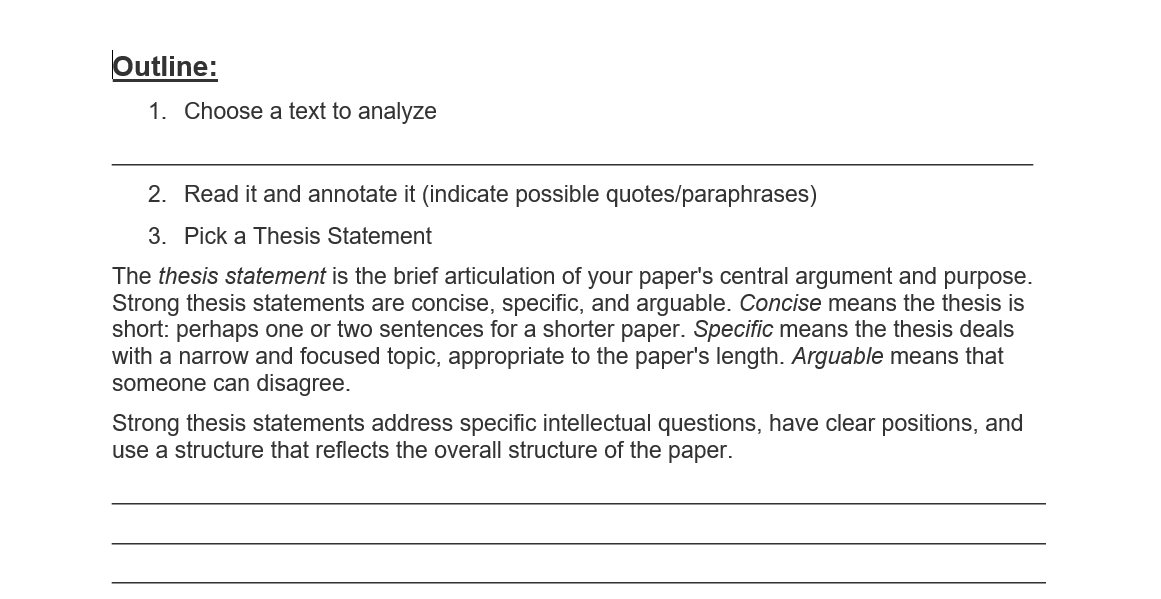|
We’re approaching the middle of the semester, and mid-term grades were due today. The past two weeks have encompassed our second unit in Composition 101—textual analysis. Their final draft is due next week. During week 6, we focused on learning about paper organization, using quotations from sources, transitioning in an essay, and annotation. One day, we discussed both Malcolm X’s speech Ballot or the Bullet and Dr. Martin Luther King, Jr.’s Letter from Birmingham Jail. Examining these two texts side-by-side was beneficial because they both directly address their audience specifically in their text and exist at the same historical moment. Both historic civil rights leaders were assassinated following these speeches/letters. It also provides two different forms—letter vs. speech. In addition, both leaders rely heavily on pathos but in remarkably different ways. I found this was a productive and thoughtful combination of readings for this course. Later in the week, we reviewed the difference between summarizing, paraphrasing, and quoting sources. We also did an in-class annotation activity. I printed a two-page worksheet that included an excerpt of a text and instructions/questions for annotating. I provided each student with a new highlighter that I told them to keep and use for future annotation or their upcoming project. They spent time reading, highlighting, annotating, and answering the questions in class. Then, we discussed their answers. I used an excerpt from the short story “Desiree’s Baby” by Kate Chopin. This was a fascinating story to include because the story has many French words. It was set in slavery-era Louisiana, and it discusses race and racism indirectly through the narrative. It also has a dramatic ending. The discussion about “Desiree’s Baby” also made room to review some of the last things we discussed, such as social constructs, Jim Crow, Plessy V. Ferguson, and the ‘one-drop rule.’ This past week, week 7, our course objectives included organizing, planning, and drafting textual analysis. On Monday, we reviewed grammar for communication. A colleague of mine put together a short PowerPoint engaging some of the most common grammar errors we noticed after project 1. We walked through a sample textual analysis from our course textbook, Norton Field Guide USM Edition, and discussed each paragraph. On Wednesday, I brought in an outlining worksheet for them to complete in class. We reviewed the entire project two rubric and marked up a sample thesis together to give them an example while they worked on their outline worksheets. They had to pick the text they wanted to analyze during class time—if they hadn’t already. I walked around as they completed the worksheet, which asked them to pick quotes, write a thesis, and choose critical points from the thesis to use as body paragraph points. I gave them 30 minutes to work on this independently and then walked around to each person. I asked each student what text they chose and their key points and asked how they felt about their thesis. Every student left the class that day with at least their thesis written and knowledge of their key points. I felt like this was successful as it broke down the paper writing process into more manageable pieces. This upcoming week includes a peer review workshop and a class dedicated to revision strategies. At the end of next week, their textual analysis is due. Over the last four weeks, we’ve committed in-depth time and activities to thesis composition, paper organization, annotation, citing sources, summary and quoting, and writing thoughtful paragraphs with lead in sentences and topic sentences. The hope is that each student has gained the knowledge of composing a textual analysis and general paper writing skills that will benefit them throughout their college career. Sometimes, it does feel overwhelming to bring in texts that can be controversial or talk about social constructs such as racism or sexism in the classroom. I think it’s easy for some folks to argue that composition is a classroom space that should be apolitical. However, I don’t think that’s a strong argument because of composition theory’s overlap with cultural studies and the acknowledgement of pop culture and the world around us. Composition is what we teach and learn, but our learning is often real people’s experiences, contemporary events, individual narratives, etc. Much like critical pedagogies, cultural studies folded into composition theory and considered the importance of enabling students to understand power distribution (Tate 97). Composition studies is necessary to students’ formative education. It has a subject matter and object of inquiry; that content is our realities, cultures, and lives. The content in comp as realities/culturally relevant texts is a marker of the public turn; composition studies are connected to real-life experiences and understanding them. Students should be encouraged to analyze the world around them and how media functions to become participant observers and understand themselves as consumers and producers of culture. Our composition studies naturally fixate on investigations beyond the classroom (Tate 105) and to our local terrain and the world beyond. I think it’s intuitive to continue bringing in socially relevant readings, especially since we’re teaching students how to critically think, determine their opinions, and use textual or visual evidence to support their claims. These are just good life skills that are helpful in and out of the classroom.
0 Comments
|
AuthorEmily M. Goldsmith (she/they) is a queer Cajun poet originally from Baton Rouge, Louisiana. They are currently a Ph.D. student at the University of Southern Mississippi. Archives
November 2021
Categories |


 RSS Feed
RSS Feed